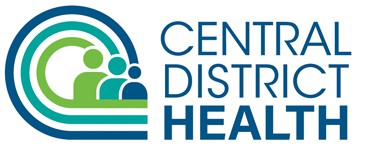On December 17, 2020, the Centers for Disease Control and Prevention (CDC) released updated treatment guidelines for uncomplicated gonorrhea and now recommend a single 500 mg intramuscular (IM) dose of ceftriaxone. Dual therapy is no longer recommended. Treatment for coinfection with Chlamydia trachomatis with oral doxycycline, 100 mg twice a day for 7 days should be administered when chlamydial infection has not been excluded.
The previous recommendation was a single 250 mg IM dose of ceftriaxone and a single 1 g oral dose of azithromycin for treatment of uncomplicated gonococcal infections of the cervix, urethra, and rectum as a strategy for preventing ceftriaxone resistance and treating possible coinfection with Chlamydia trachomatis. Increasing attention to antimicrobial stewardship and the potential impact of dual therapy on commensal organisms and concurrent pathogens, in conjunction with the continued low incidence of
ceftriaxone resistance and the increased incidence of azithromycin resistance, has led to reevaluation of this recommendation. Additional important considerations when treating a patient infected with N. gonorrhoeae include:
A test-of-cure is not needed for people who receive a diagnosis of uncomplicated urogenital or rectal gonorrhea unless symptoms persist.
- A test-of-cure is recommended in people with pharyngeal gonorrhea 7-14 days
after the initial treatment, regardless of the regimen. - Patients who have been treated for gonorrhea should be retested three months
after treatment to ensure there is no reinfection. - Facilitate partner testing and treatment.
According to CDC, sexually transmitted N. gonorrhoeae infections have increased 63% since 2014 and are a cause of sequelae including pelvic inflammatory disease, ectopic pregnancy, and infertility and can facilitate transmission of HIV. Idaho public health officials have noted a nearly 130% increase in the number of cases reported during 2019 compared with 2015.
Drug-resistant gonorrhea remains an urgent public health threat as half of all gonorrhea infections are resistant to at least one antibiotic. While neither CDC nor Idaho public health officials are seeing treatment failures, continuing to monitor for antimicrobial resistance is critical.
Additional treatment considerations can be found in “Update to CDC’s Treatment Guidelines for Gonococcal Infection, 2020”.
If you have questions regarding appropriate treatment or reporting infections, contact Central District Health Communicable Disease Control Program at 208-327-8625 or faxing information to 208-327-7100 or to the Bureau of Communicable Disease Prevention Epidemiology Section (Telephone: 208-334-5939 or Fax: 208-332-7307).
Current CDC Chlamydia and Gonorrhea Screening Recommendations
- All sexually active women younger than 25 years should be tested for gonorrhea and chlamydia every year. Women 25 years and older with risk factors such as new or multiple sex partners or a sex partner who has an STD should also be tested for gonorrhea and chlamydia every year.
- All pregnant women should be tested for syphilis, HIV, and hepatitis B starting early in pregnancy. At-risk pregnant women should also be tested for chlamydia and gonorrhea starting early in pregnancy. Testing should be repeated as needed to protect the health of mothers and their infants.
- All sexually men who have sex with men should be tested at least once a year for syphilis, chlamydia, and gonorrhea. Those who have multiple or anonymous partners should be tested more frequently for STDs (i.e., at 3- to 6-month intervals).
- Test at sites of contact (urethra, rectum, pharynx).
Resources
Update to CDC’s Treatment Guidelines for Gonococcal Infections, 2020: http://dx.doi.org/10.15585/mmwr.mm6950a6

